Palm livistona at home - care and photos
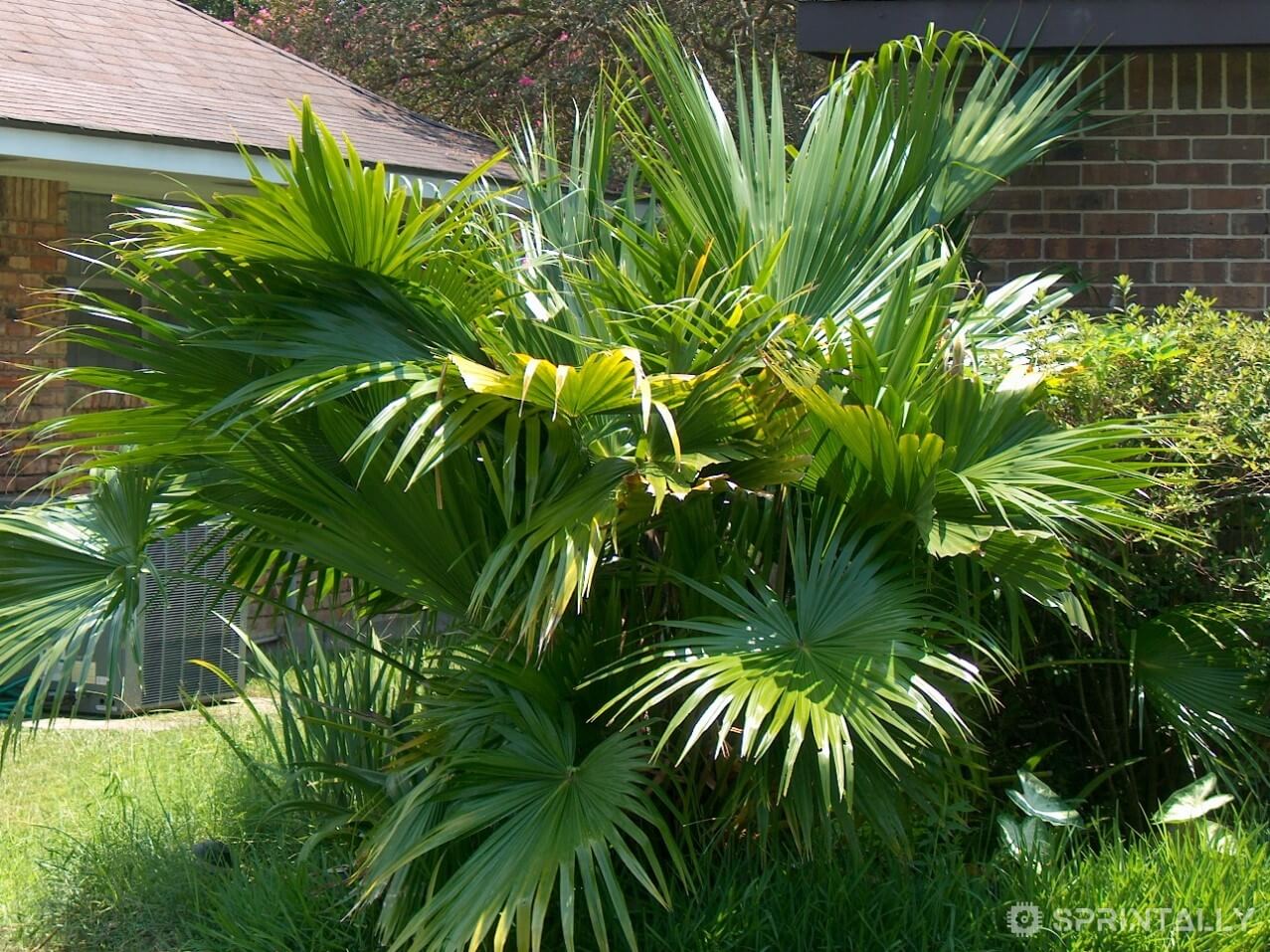
Palm Livistona: Palm trees that we associate with hot countries, tropical moist forests, or at least seaside, and breath the gentle breeze. Illusions and dreams of a luxurious vacation under the sun. Some people don't want to put up with sweet dreams of pleasure surrounded these wonderful representatives of exotic vegetation and give birth at home these types of crops. If you too are thinking about making a similar step, try to grow at home Palma Livistona.
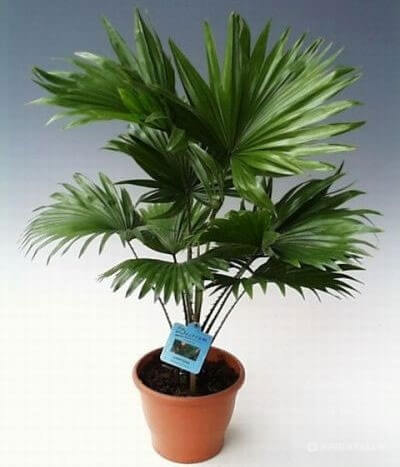
What kind of plant it is?
Palma Livistona belongs to the Botanical family of the Palm (Areca). Representatives of this genus grow on the territory of Australia and Oceania. Many Livistona palms can be seen in the countries of South-East Asia. These regions of the world are home to our new friend. In addition, the area of distribution of this genus of palm trees covers Polynesia, the Islands of the Malay archipelago, New Guinea.
From all this, we can conclude that in the wild palms Livistona settled in subtropical and tropical areas of the globe.
The plant we are interested in has a large size. In its natural habitat, Livistonas palm reaches a height of 20-25 m. The trunk of the exotic is covered with scars and leaf sheaths, which are equipped with long rod-shaped petioles of the vegetative organs. The top of the plant is formed by a lush crown of fan-shaped dissected foliage. Livistonas can bloom. Its reproductive organs are collected in axillary inflorescences. Palm flowers do not represent decorative value. At home, Livistonas palm has become widespread only because of the beautiful spreading leaves that form the attractive appearance of an exotic culture. It should be said that decorative leafy Livistona looks very impressive both in houses, apartments and in offices and halls.
The genus of these palm trees includes 30 species of plants. Three species of Livistons received the greatest popularity in room culture: L. Chinese, L. Southern and L. rotundifolia.
Check
For the successful cultivation of palms Livistona at home, she needs to create the most comfortable conditions. Read more about it.
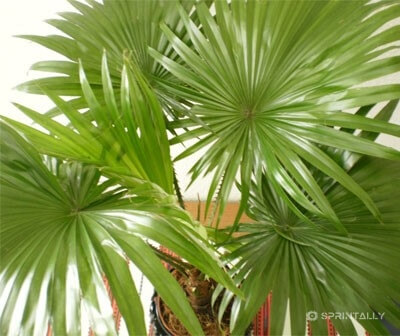
What kind of lighting you need the Livistona
The Livistona for full development you need a lot of sunlight. Allowed a small amount of direct rays of the sun. But in any case, the palm must from time to time to turn to the source of light of one or the other party. In late spring and throughout the summer day Livistona it is possible to keep the open balcony, and even better — in the garden. The only place to do this, choose protected from the wind.
Features of the thermal regime
Livistona Palma thermophilic. She feels comfortable at higher temperatures in summer: the optimal mode varies from +27 to +33º, is no longer necessary. In the winter, the thermometer in the room with the palm tree should not fall below +12°. The recommended temperature at this time of the year for the cultivation of exotic crops: +18+22º. Drafts the Livistona contraindicated.
Humidity in the home
The Palm Livistona requires a sufficient amount of moisture in the surrounding atmosphere. Dry air, especially at elevated temperatures can lead to very undesirable consequences. High humidity Livistona and the need to maintain the rich green color of the foliage. In summer, a palm tree should be sprayed with soft water at room temperature: up to two times per day. You can wash the plant under a shower. To increase humidity it is recommended to put a pot of exotic in a pan filled with damp peat or expanded clay.
The soil for growing palm trees
Substrate for the cultivation of Livistona at home is preferable to use ready-made, store-bought and intended for the cultivation of palm trees. To increase the looseness of the soil, you can mix it with a small amount of river sand. If you wish to form the soil for palms Livistona, connect the ground sheet, peat, ash and coarse sand in the ratio 2:2:1:1. On the bottom of the tank, place a layer of drainage material.
Care palm Livistona
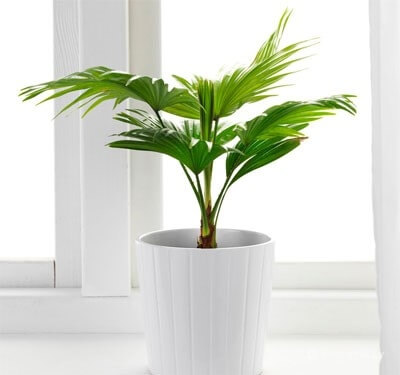
As Palma Livistona — tropical plant, it needs abundant watering. It is especially important to adhere to this rule in hot summers. Larger copies are required, respectively, more moisture. Pour the culture should not be settled in cold water. During the growing season water, the procedure should be carried out regarding the Livistona through the day. You can use passive watering: pour water in the pan with the culture, and after 30 minutes drain is not absorbed into the soil moisture. The drying of the soil in the pot with a palm tree is unacceptable. In the autumn and winter watering should be reduced.
As fertilizer for exotic plants uses complex mineral concentrate. It is made in the ground under the Livistona, starting in March or April and ending with October. The frequency of fertilizing — 1 time per 10 days. In the winter, this event does not cease, only change the mode of its exercise - go on a monthly fertilizer exotic. In the spring, it is appropriate to treat Livistona organic matter. It will favorably affect the development and growth of the palms.
Transplantation and propagation
A must for successful cultivation of palms Livistona at home is her regular transplant.
Both young and Mature plants need periodic transplanting. The first shift of the pot and substrate is produced each year in the spring. Second transplant as needed: for example, if a culture has grown or the soil was exhausted. When carrying out this procedure it is very important not to disturb the roots of trees - as far as possible, of course. Burying the plants when transplanting into the new soil is not required, pot are larger: wider and deeper still. 1/5 of the tank volume should take a high-quality drainage. The composition of the soil similar to that used in the primary planting culture.
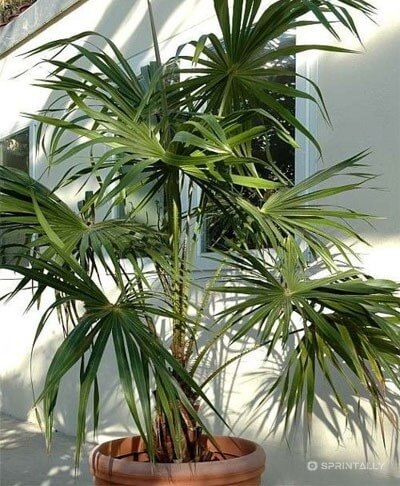
Reproduction Livistons at home carry out seeds. Before planting, they need to soak for two days, then sown in separate cups or miniature pots. These containers with future seedlings are placed under glass or film and provide them with bright light. Periodically, the greenhouse is ventilated. After 1-2 months, shoots appear. Upon reaching sprouts 7-8 cm in height, the plants are transplanted to a permanent place in a new pot. Caring for the newly-made Livistona is carried out in the same way as for an adult culture.
Vegetatively multiply the plant will not succeed, so do not even try.
Possible difficulties
Palma Livistona damaged by spider mites, scale insects, whiteflies and mealybugs. Of diseases on the plant often develop rot. Excessive watering promotes this culture or the use of poor quality soil for planting/transplanting of Livistona. Not to miss the visit of uninvited guests, from time to time carefully inspect the palm for the presence of pests and diseases.
As a result of insufficient moisture of the soil under the plant and excessive dryness of the air, the owner of the palm tree may well encounter the problem of wilting, wilting, and even falling leaves. The soil is poor in nutrients, provokes the extinction of the culture. The death of a palm tree also occurs when Livistons are kept in low-temperature conditions. The lack of moisture in the air causes yellowing of the foliage. Often fan-shaped leaves of palm trees are covered with ugly spots.





